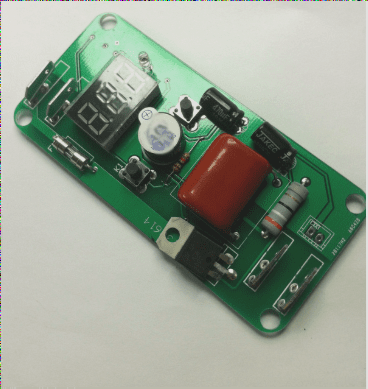Misunderstanding 3: The differential signal does not need a ground plane as a return path, or that the differential traces provide a return path for each other. The reason for this misunderstanding is that they are confused by superficial phenomena, or the mechanism of high-speed signal transmission is not deep enough. It can be seen from the structure of the receiving end that the emitter currents of transistors Q3 and Q4 are equal and opposite, and their currents at the ground exactly eliminate each other (I1=0), Therefore, the differential circuit is insensitive to similar ground bounces and other noise signals that may exist on the power and ground planes. The partial return elimination of the ground plane does not mean that the differential circuit does not use the reference plane as the signal return path. In fact, in the signal return analysis, the mechanism of differential wiring and ordinary single-ended wiring is the same, that is, high-frequency signals always reflow along the loop with the smallest inductance. The biggest difference is that in addition to the coupling to the ground, the differential line also has mutual coupling. Which kind of coupling is strong, which one becomes the main return path.
In PCB circuit design, the coupling between differential traces is generally small, often only accounting for 10 to 20% of the coupling degree, and more is the coupling to the ground. Therefore, the main return path of the differential trace still exists on the ground plane. When there is a discontinuity in the ground plane, the coupling between the differential traces will provide the main return path in the area without a reference plane. Although the influence of the discontinuity of the reference plane on the differential trace is not as serious as that of the ordinary single-ended trace, it will still reduce the quality of the differential signal and increase EMI, which should be avoided as much as possible. Some designers believe that the reference plane under the differential trace can be removed to suppress some common mode signals in differential transmission, but this approach is not desirable in theory. How to control impedance? Do not provide a ground impedance loop for the common mode signal, which will inevitably cause EMI radiation, and this practice is more harmful.
Differential traces can also go in different signal layers, but this method is generally not recommended, because the differences in impedance and vias produced by different layers will disrupt differential mode transmission and introduce common mode noise. In addition, if the adjacent two layers are not tightly coupled, it will reduce the ability of the differential trace to resist noise. However, if you can maintain a proper distance from the surrounding traces, crosstalk is not a problem. At general frequencies (below GHz), EMI will not be a serious problem. Experiments have shown that the attenuation of radiated energy at a distance of 500Mils away from the differential trace has reached 60dB at a distance of 3 meters, which is enough to meet the FCC electromagnetic radiation standard. Therefore, the designer does not have to worry too much about the electromagnetic incompatibility caused by insufficient differential line coupling.
WellCircuits Limited is a manufacturer specializing in the production of high-precision double-sided, multi-layer and impedance-controlled, blind buried vias, and thick copper circuit boards. The products cover HDI, thick copper, backplanes, rigid-flex combined, buried capacitance and buried resistance, Golden Finger and other types of circuit boards, which can meet the needs of customers for all kinds of products.
In PCB circuit design, the coupling between differential traces is generally small, often only accounting for 10 to 20% of the coupling degree, and more is the coupling to the ground. Therefore, the main return path of the differential trace still exists on the ground plane. When there is a discontinuity in the ground plane, the coupling between the differential traces will provide the main return path in the area without a reference plane. Although the influence of the discontinuity of the reference plane on the differential trace is not as serious as that of the ordinary single-ended trace, it will still reduce the quality of the differential signal and increase EMI, which should be avoided as much as possible. Some designers believe that the reference plane under the differential trace can be removed to suppress some common mode signals in differential transmission, but this approach is not desirable in theory. How to control impedance? Do not provide a ground impedance loop for the common mode signal, which will inevitably cause EMI radiation, and this practice is more harmful.
Differential traces can also go in different signal layers, but this method is generally not recommended, because the differences in impedance and vias produced by different layers will disrupt differential mode transmission and introduce common mode noise. In addition, if the adjacent two layers are not tightly coupled, it will reduce the ability of the differential trace to resist noise. However, if you can maintain a proper distance from the surrounding traces, crosstalk is not a problem. At general frequencies (below GHz), EMI will not be a serious problem. Experiments have shown that the attenuation of radiated energy at a distance of 500Mils away from the differential trace has reached 60dB at a distance of 3 meters, which is enough to meet the FCC electromagnetic radiation standard. Therefore, the designer does not have to worry too much about the electromagnetic incompatibility caused by insufficient differential line coupling.
WellCircuits Limited is a manufacturer specializing in the production of high-precision double-sided, multi-layer and impedance-controlled, blind buried vias, and thick copper circuit boards. The products cover HDI, thick copper, backplanes, rigid-flex combined, buried capacitance and buried resistance, Golden Finger and other types of circuit boards, which can meet the needs of customers for all kinds of products.



